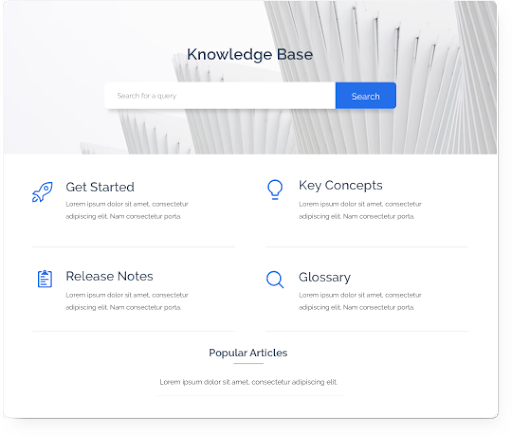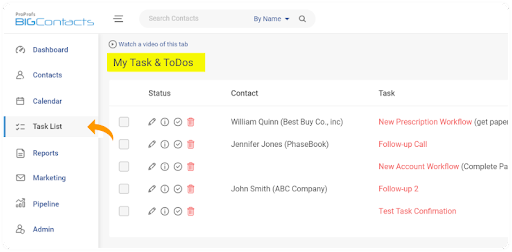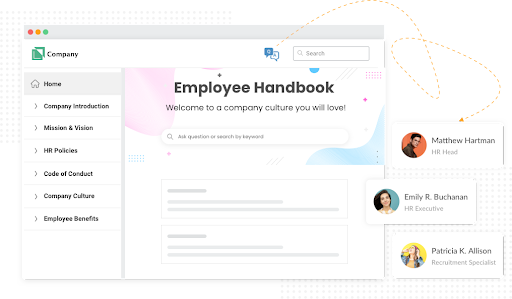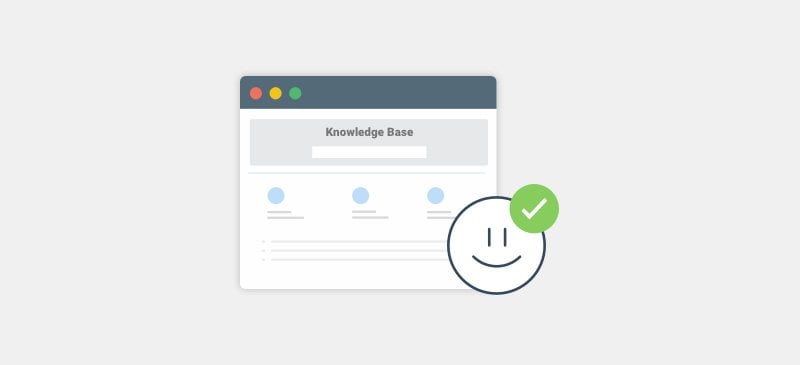
“Like a human being, a company has to have an internal communication mechanism, a nervous system, to coordinate its actions.” – Bill Gates.
How many times have you struggled with information in silos, lack of collaboration, low team participation, or dropping productivity levels?
We’re guessing fairly often. But what is causing this, and what can you really do about it?
It all comes down to how to communicate with your team members.
While it is easy to let communication take a natural course, it proves to be ineffective in the long run. It’s high time you start paying attention to how information flows within your organization and how engaged your employees are. All of this brings forth the importance of having an effective strategy in place.
Revamping your communication techniques isn’t devoid of challenges. In this blog, we highlight internal communications best practices, tools, and techniques that can help you overcome those challenges and drive meaningful conversations within your organization.
What is Internal Communications?
Internal communications include the tools, strategies, and practices employed to transmit valuable information to team members. In simple terms, it is how communication happens within the organization.
Effective internal communication ensures that everyone stays on the same page and there is complete transparency. It keeps employees well-informed about the company’s offerings, mission, vision, and long-term goals. Moreover, it allows employees to communicate with their colleagues and management. All of this empowers them to put their best foot at work every single day.
However, the benefits extend beyond employees’ productivity levels.
Internal communications is not simply a way to boost collaboration but a long-term strategy that ensures that information flows seamlessly within the organization. All these advantages lead to exponential business growth and improved brand image.
Internal Communications Challenges
An organization that fails to effectively communicate its values and goals to its employees is likely to never meet these goals.
Internal communications may seem to be a straightforward process. However, it has its own challenges that can be eliminated with a communications director and competent team that oversees a well-drawn communication strategy. Before we dive into internal communications best practices, let’s take a look at some of these challenges:
- Ensuring that only relevant information is passed and there is no overload
- A culture that restricts employees from asking questions
- Lack of consistency in the messages employees across departments receive
- Bringing everyone on board with the communications plan
- Absence of a systematic process to capture employee feedback
- Information silos that further leads to disconnected communication
- Delivering information through the channels preferred by employees
- Crafting an effective strategy that takes all requirements and challenges into account
- Finding the right internal communication software
What Makes Internal Communication Important?
Internal communication happens at multiple levels within the organization – from higher management, within teams, and among peers. Aiding such communication requires an effective strategy, including the right tools and tactics.
However, you might find yourself asking-
Why is internal communications worth all that effort?
A straightforward answer would be YES!
Often, employees feel that they are being left out from important company news. Studies reveal that 72% of employees don’t completely understand their company’s strategy. Therefore, it is essential to communicate such information effectively to make employees feel more involved.
Therefore, investing time and resources in developing a communication plan is crucial. It also presents you with the opportunity to bring more transparency and accountability to the organization.
Some of the other significant internal communications benefits include building trust with employees, keeping their ideas aligned with company objectives, and creating an improved work environment. Besides these advantages, internal communication also helps the company gauge employee needs.
Benefits of an Internal Communications
Leveraging your internal communications strategy for driving company values and goals provides your employees with a sense of responsibility and belonging. The list of benefits of internal communications is extensive. It includes everything from employee engagement to overall organizational productivity.
The day-to-day efficiency of your company can skyrocket when information is shared without any errors or lags. It also makes it easy for employees to communicate with each other in order to get things done on time.
Read More: Internal Documentation: How to Create, Tips & Examples
Here are the most significant advantages of a well-defined internal communications strategy:
Keep Your Teams Well-Informed
Internal communications enable knowledge sharing information with employees. Delivering the correct messages and approvals at the right time enhances the overall effectiveness of business operations. It helps build a team with a strong alliance and cooperation capabilities. Clear communication also results in more profitable outcomes since there are fewer gaps in information exchange.
Get Rid of Email Overload
Studies have shown that, on average, a full-time employee in America receives 120 emails each day and spends almost 2.6 hours reading and answering them.
Internal communications can reduce this overload by transmitting information in the most efficient email management way. It makes interactions much more relevant and meaningful, eliminating the need to go through endless emails every day.
Boost Employee Engagement
Employees are the cornerstone of an organization. This requires the upper management to pay special attention to how well-engaged employees are. Active engagement at workplace boosts individual productivity levels. It makes for a more efficient workforce where all team members are up-to-speed with company objectives and ideas. It also builds your image as a company that is transparent and honest with its employees.
Keep Your Employees Motivated
Effective internal communication not only acts as a way to engage employees but also motivates them. It encourages them to take initiatives, share ideas and participate in discussions. It defines objectives and roles clearly, which further strengthens employees’ ability to deliver satisfactory outcomes.
Improve Employee Experience & Retention
Internal communications make employees feel valued and heard. This enhances their engagement and participation levels, contributing to improved overall experiences for them. Enhanced experiences also result in higher employee retention. It brings the entire organization together, helping employees connect better and reducing internal conflicts.
Facilitates Inter and Intra-Departmental Communication
Just as much as an effective communication strategy helps the company reach its employees, it also facilitates communication among them. Employees can exchange knowledge with each other and collaborate towards shared business goals. Moreover, it aids cross-departmental communication, allowing different business divisions to work in sync.
Keeps Remote Workers in Touch
With more people working remotely now than ever, internal customer service has gained prime importance for businesses. Effective communication with remote employees ensures that they remain aligned with company objectives and stay connected with other teams. It helps them stay updated with relevant company news and not miss out on important information.
Related Read: Tips for Successful Remote Employee Onboarding
Internal Communications Tools
The output of your internal communications is considerably affected by the types of tools you use. You cannot expect to boost engagement and build a strong company culture if you do not use the best internal communications tools to reach out to your employees.
Here are some important internal communications tools that should be a part of your strategy:
Knowledge Base Tools
Using a robust knowledge base software can significantly enhance your internal communications. Such tools help you create an internal knowledge base or an employee handbook where all your business information can be securely stored and accessed 24×7.
When everything employees need right from company policies to client details is centrally available, they can confidently perform their duties.

Collaboration Tools
Effective collaboration tools such as ProProfs Collaborate can help your employees exchange information effectively. It makes information sharing more organized and accessible. With searchable question forums and private or public groups, you can completely transform the way your team communicates.
CRMs
Customer relationship management tools are not just a repository of client information. They also help boost employee productivity. Everyone on the team can find relevant information at the click of a button. This makes it easy to share updated information with other team members.
Moreover, a powerful CRM such as BIGContacts improves task management, so employees can easily keep track of upcoming events and deadlines.

Best Practices to Create Internal Communications Strategy
While the significance of internal communication is realized by businesses across industries, there is no one-size-fits-all approach to it. You must craft an effective strategy that takes into account the unique needs of your organization.
Surprisingly, 60% of companies do not have a long-term strategy for internal communications.
This puts companies at risk of low productivity levels and ineffective utilization of their resources. Drafting a clear strategy for internal communications is, therefore, a must. Such a formally defined strategy helps you avoid errors in communication and ensure that the right information reaches your employees on time.
Here are some internal communications best practices to create a proactive plan that helps your business keep up with the ever-changing dynamics and trends:
Undertake Analysis of Existing Plan
The best place to start is to carry out an audit of the existing communication plan. Take into account all the channels that are currently being employed to connect with people within the organization. Such a detailed analysis can help you identify the areas that need improvement. Assess the benefits and shortcomings of your current strategy.
Does your workforce spend too much time looking for the right information?
Are the existing channels for communication being used?
Finding the answer to such questions will provide you with actionable insights to create a well-functioning communication plan for your business.
Define Your Expectations Clearly
Establishing clear expectations should be your top priority when crafting your communications strategy. Executing a new communications plan can be a challenge. Therefore, you must set SMART goals and a timeline for a seamless transition.
Gain a clear understanding of how internal communications can benefit your organization. Knowing what you expect to achieve can enable you to create internal communications strategy that yields positive results and promotes business growth. Defining goals right at the start will allow you to track how well the communication strategy is being implemented and adopted by your team.
Track the Success of Your Internal Communication Strategy
Any business endeavor requires regular and close monitoring, and no exception should be made for internal communications. Choose relevant KPIs to continuously measure the success of your communication strategy. Such metrics can help you identify if the information is reaching the employees and how they are engaging with it.
To measure the performance of your internal communications plan, keep track of channels that work well. Find out which type of content has higher engagement levels or shares. This data can help you obtain insights into optimizing your communications strategy.
Know Your Employees Needs & Expectations
In order to optimize internal communication, you must know your employees well.
What information do they seek frequently?
Which type of content carries more relevance for them?
While it is important to keep employees informed about company news, constantly bombarding them with information can be counterproductive. Understanding their needs and expectations empowers you to deliver relevant and concise communications.
Use your understanding of the employees to offer valuable content that empowers them in some form. This not only makes for effective engagement but also turns your employees into your brand advocates.
Make Use of Visual Elements
Adding visual elements to your internal communications not only engages employees but also delights them. With 65% of people being visual learners, it becomes important to craft your messages in a way that holds employees’ attention.
This can be done using visual aids such as digital signage placed as screens within the office premises or delivered online. This allows you to display important information through interactive visuals. This breaks the monotony of communication and makes a lasting impression.
Additionally, you can include video snippets or infographics to your internal knowledge base or share such visual content via the company’s intranet to drive more engagement.
Include Feedback Channels
Internal communication effectively works a two-way street.
Just as much as it helps in delivering relevant updates to employees, it also helps you seek valuable information from them. There is absolutely no substitute for open and honest conversations in internal communications at the workplace. There should be a transparent dialogue between the company and the people it employs. This ensures that the intended message is being transmitted without any distortion.
By creating channels for employees to share feedback, voice opinion, and discuss ideas, you can get access to insights that can contribute to the company’s growth.
Segment Your Audience
To be more effective and engaging in your communication, you must know who you’re connecting with. This can be done by segmenting your employees into categories based on what information would be the most relevant to them. This distinction can be made according to their role, department, preferences, location, etc.
Such strategic segmentation promotes the targeting of information, which ensures that you can reach your specific audience at the right time. It also makes it easy to discern which communication channel would be the most effective for a particular segment.
However, this does not apply to company-wide announcements or messages that carry relevance for employees from all business departments.
Use a Multi-Channel Approach
The channel you use for transmitting information is just as important as the information itself. You must reach employees in a way that appeals to them. This is why it’s important to incorporate multiple communication channels in your strategy. These include intranet, emails, knowledge base, social media, community forums, live chat, etc.
A multi-channel approach keeps communication more organized and boosts engagement levels. It helps reach employees where they prefer to get information, instead of expecting them to use a single communication channel.
How Can Knowledge Base Software Improve Internal Communication?
Irrespective of the scale of your organization, you need a way to connect and engage with your team members. This is easier said than done.
Poor communication keeps the employees from understanding the company’s goals and ideals. This leads to inefficient operations and wastage of resources. The right tech stack empowers you to communicate within the organization without any hassle or inconsistencies. An essential part of this stack is a knowledge base tool.

A knowledge base system is much more than a way to create online documentation. A powerful knowledge base software such as ProProfs Knowledge base can also:
- Act as an employee handbook
- Maintain all training documents in one place
- Provide 24×7 access to company information
- Promote a knowledge-sharing culture in your organization
- Empower employees to self-learn at their own convenient pace
- Reduce the need for expensive, offline training
- Provide immediate access to subject matter expertise
All of these advantages make for improved internal communication. It ensures that important information does not get lost in the sea of messages and emails.
Internal Communications Trends
As is the case with any business strategy, internal communication trends are ever-evolving.
While the traditional methods of internal communications, such as newsletters and emails, still hold some relevance, there are several upcoming trends that are highly cost and time-efficient.
You must stay updated with such latest trends and continuously incorporate them into your communication plan. Keeping track of the recent developments in the industry helps you optimize your strategy and derive maximum benefits.
Here are some current trends for internal communications that should be a part of your strategy:
- Executive leadership is now taking an active role in internal communications
- Inclusion of multiple communication channels, including intranet, mobile applications, emails, collaboration tools, etc. in the strategy
- Trying out new formats such as short videos in your knowledge base or creating an employee handbook
- Establishing clear channels to collect employee feedback
- Creating a company culture that puts the mental well-being of employees front and center
- Providing continued training and development opportunities
Strengthen Internal Communication to Grow Your Business
Every business strives to establish a strong foothold in the marketplace.
However, accomplishing this can be an ordeal if you do not communicate goals and expectations right from the start.
Creating an internal communication strategy can help overcome this challenge. Such a plan can be drafted by clearly defining your core message, understanding your employees, and investing in the right tools.
ProProfs Knowledge Base is one such communications tool that can help you realize the true potential of your business. Improving knowledge sharing and fostering team collaboration, can accelerate your growth. Moreover, it can simplify communication by acting as an effective storehouse of company information.
Now that you are aware of internal communications best practices and tools, you can rest assured that your employees remain informed and well-engaged at all times.
Do you want a free Knowledge Base?
We have the #1 Online Knowledge Base Software for instant self-help







